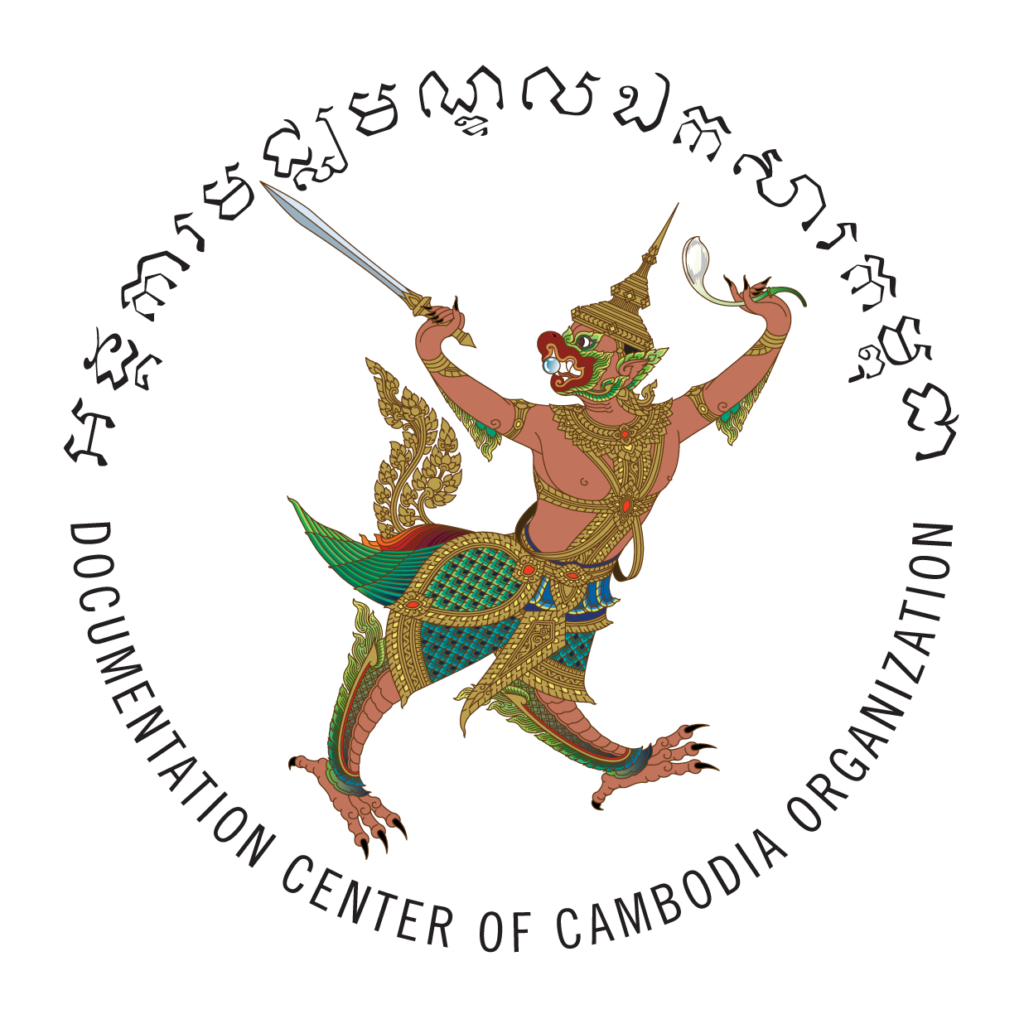On November 27, 2019, a community forum was held inside a public hall in Rohal village, Anlong Veng district. Nineteen villagers were involved in the forum. They made they took time during their busy harvest season to participate and share their opinions on many topics of discussion, ranging from the history of Democratic Kampuchea (1975-1979) and of Anlong Veng community to the trials at the Extraordinary Chambers in the Courts of Cambodia (ECCC) and other relevant topics. Anlong Veng Peace Center organized a monthly forum here as part its effort to uphold the “Rule of Law” in the aftermath of ECCC — better known as the Khmer Rouge Tribunal.
Since the commencement of the ECCC, the Anlong Veng Peace Center, a project initiated by Documentation Center of Cambodia (DC-Cam), has facilitated people from across Cambodia to journey to see the actual courtroom or to attend the hearings where “senior KR leaders and those most responsible” for the crimes committed during the Khmer Rouge’s rule —April 17, 1975 to January 6, 1979 — were brought to justice.
Among the many thousand people who journeyed to the tribunal, Rohal village deputy chief Rem Hal traveled from his village to Phnom Penh under DC-Cam’s outreach program back in late 2000s. Speaking at the forum, he recalled that on his return from ECCC, he shared the brochures, magazine, and other hand-outs he got from his visit with his villagers. He also discussed the ongoing trial proceedings at the ECCC. That’s why all the nineteen villagers said they heard this from Mr. Rem Hal, and also kept following the proceedings via radios or TVs. Their immediate curiosity stemmed largely from their keen interest in learning who was responsible for the millions of deaths of Cambodian people.
All the attendees thought that truth is critical to understand “who is bad and who is good.” I shared with them that Khieu Samphan, former Head of State of Democratic Kampuchea, Nuon Chea, former president of People’s Assembly, and Kaing Guek Eav alias Duch, former chief of Tuol Sleng Prison (or S-21), are now serving their life terms in prison.
Preparing a power generator for the projector so that the attendees can view some documentary films and photos from DC-Cam archives.
Rithy Nann, Maon Vaun and Meas Pealy, former Khmer Rouge soldiers, approved of the judgements against those KR leaders. Vaun strongly believes that when everyone is treated as equals before the law, it leads to more sustainable nation building. Pealy viewed the sentences handed down at the ECCC as a breath of relief. He said: “I used to have a great concern over the trial. But, as justice was delivered, I no longer had any fear.” Pealy further stressed that past sufferings are not easily described in words. Pealy even used an analogy: “with rule of law being strictly and equally applied for all the people, the ghost dare not to haunt us anymore.” Nan said the past gives us a lot of lessons, for example, we all thought Pol Pot was a good guy; however, according to the former KR medic, Chhit Choeun or Ung Choeun, former chief of Southwest Zone, some of his relatives were killed after he returned from fighting along the border. Rithy Nan thought it was a shame to serve a movement that was responsible for the death of nearly two million people. All agreed that history and punitive justice could serve as a reminder to not repeat our past mistakes.
Nineteen villagers and teachers participated in the community forum
Recently, the alleged perpetrators went unpunished in a rape and murder case in Lumtong Chas. This caused the Rohal villagers great concern and led to great suffering among them. However, the forum attendees admitted they may not have all the essential information about the case. For example, they were not sure if the case was, in fact, closed yet. Regardless, the case had an adverse effect on the local rights, development, and, in particular, education. To the villiagers, it could, in one way or another, breed a new despicable act. That’s the reason all the attendees valued the work focused on justice at ECCC — as it should be a model of punishing the wrongdoers. Until more is known about the case, the villagers discourage their children to continue schooling due to concerns about female children’s personal security.
Villagers making a humble appeal to Oddar Meanchey Department for Education, Youth and Sport, and Ministry of Interior during the forum: first, children in and around the village are desperate for a secondary school; second, all the attendees would like the Ministry of Interior to officially recognize the village as Rohal village because the village chief and his deputy chief have relentlessly worked for almost twenty years without a salary. Rohal village consists of 315 houses with 327 families (1,013 persons). Thirty families lived there before Anlong Veng, the final stronghold of the Khmer Rouge movement, reintegrated into the government in 1998.
The development of human resources is a sticking point. According to Nuth Sakhan, a teacher at Rohal Primary School, 25 students drop out after finishing their primary school. This is because, Trapeang Tav Secondary School is more than twenty kilometers away from villages. Secondly, the villagers believe the students are at great risk of being raped and murdered. It is the very reason that they now take a wait-and-see approach when considering whether a secondary school can be built in Rohal village or any nearby villages for their children.
Mr. Odam took the opportunity to announce his fundraising for school renovation as there is a great demand for more school rooms. He also commented that this forum was simple, but fruitful, because everyone was given a voice. Rithy Nan reminded the attendees of the need to build “a democracy” with honesty and integrity.
PHOTO LINK: https://photos.app.goo.gl/2h1YLEvAdS7pU4pL8
DONOR: United States Agency for International Development (USAID)
TEAM: Mek Ven, Ly Sok-Kheang & Hean Pisey
REPORT: Ly Sok-Kheang
